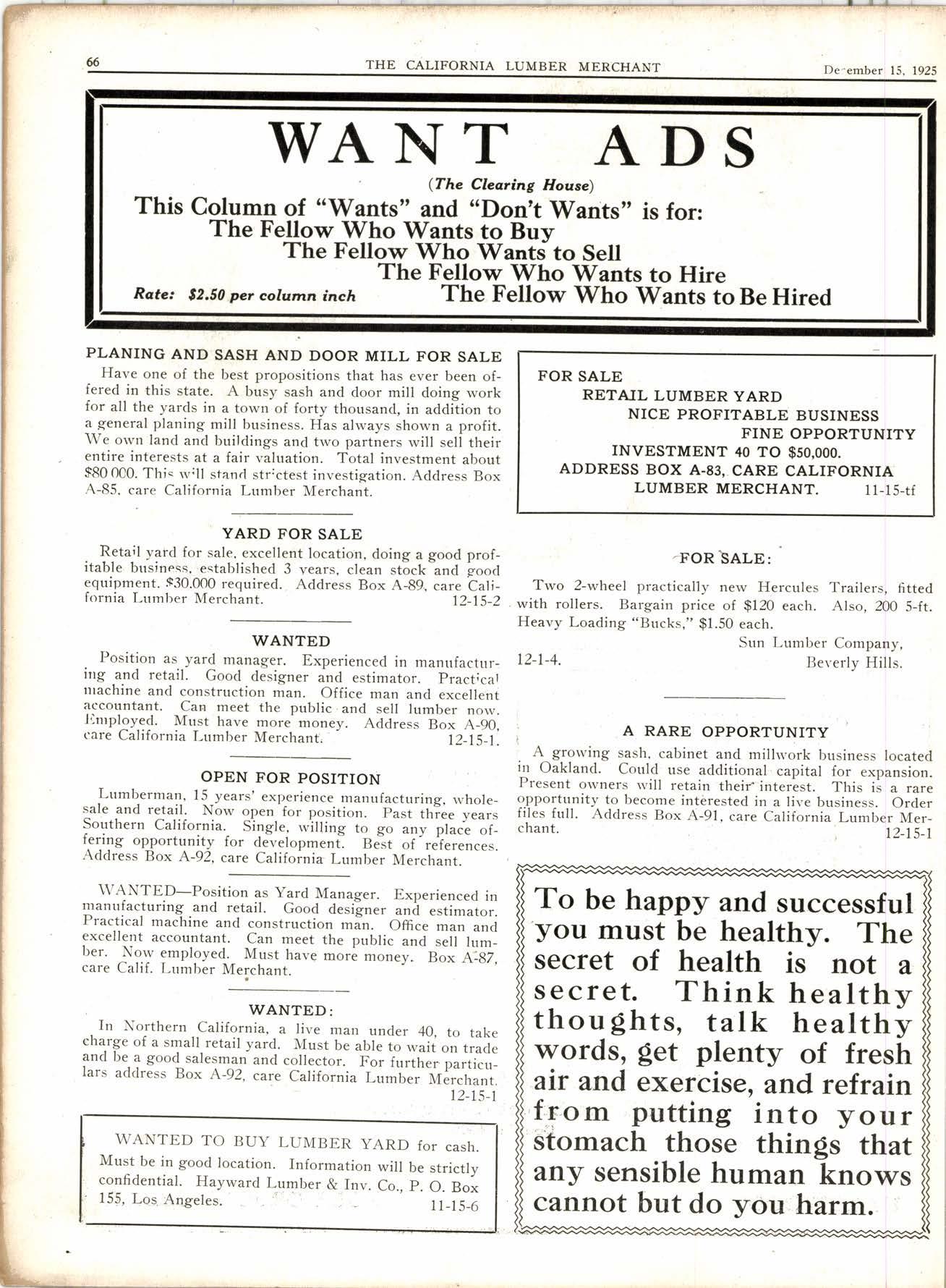
2 minute read
LosAngeles DEADENER
VERN O. KNUDSEN, Ph. D.
Phyticirt and Con3ultant on Acourtlcr
' 740 North Hyperion Avenue
Phone 501-El3
LOS ANCELES
Bishopric Manufacturing Company, Los Angeles, Calif.
October 12, 1925.
Herewith are the results of my recent tests uDon sound-insulatinc ma- terials. These tests were conducted to determine. in absolute uniti. the sou-nd-insulatiog values of various materials which are used in present day building construction.
'lhe materials to be tested were in the form of a panel. two feet bv two feet, which comprised one side of an otherwise sound-proof box.' The source of sound, on the inside of the box, was a Dure tone. the frequency of which was 256 double vibrations per secon{. (This is apfroximateiy thi frequency which corresponds to the frequency of the conversation voice; l_hat is, it_is the most prominen_t frequency in ordinary conversation.) A Webs_ter Phonometer- pla-ced outside the box measured the amplitude oi the sound wave transmitted through the test panel.
The results of the tests upon the materials alone forming the test oanel are given in the table below. The first column gives the name of the material tested. The second column gives the amplitude reduction, that is. the number of times the amplitude of the sound wave is reduced bv beins transmitted through the panel. The third column gives the enercy reducl tion of the sound wave by passing through the plnel. The lasl- colrrmn expresses the reduction of the sound in terms of sensation units. These are the most significant units for expressing the insulating value of sounddeadening materials, as they are expressed in terms of how we hear.
Materlal Amplltude Encrgy Lo8-unlt3 Ttcted Reduction Reductlon Rcduction
From the above data. it. is €-videnl that Bishopric Insulating Base has greater sound instrlating value than the other mat6rials tested.
Very respectfully yours, VERN O. KNUDSEN.
LUIT,IBER DTSTRIBUTTON AND CONSUMPTTON FIGURES GIVEN IN GOVERNMENT BOOKLET
For the first time in the history of the lumber industry the Federal Government has compiled statistics showing the distribution and consumption, as well as the production, of lumber. These figures were worked out by the Forest Service, United Statei Department of Agriculture, and are published in "The Principal Lumber Industries," a booklet just issued by the Bureau of the Census. '
The distri6ution and consumption of lumber in L923 are shown by States and regions. For example, Californio, which pr6duced more than two billion board feet, consumed over fo-ur billion feet, the States of Oregon and Washington having shipped liberally to California. In fact, according to thJbookftt, 26 States and the District of Columbia consumed more lumber in 1923 than they produced, leaving only 22 States which showed a greater production than consumption.
Washington led in supplying lumber to other States. Other leading States in this respect included Louisiana, Oregon, Mississippi, Alabama and Arkansas. Those States whidh i,n 1923 consumed more than one billion board feet of lumber included California, Illinois, New York, Pennsylvania, Michigan, Ohio, Washington, Texas and Indiana, of which only Washington and Texas produced as much lumber as thev consumed.
Breeding Out Mistletoe
Colorado Springs, Colo., Nov. S.-The Rocky Mountain region has, at a conservative estimate, 100,000 acres of mistleto-infected yellorv pine, according to a recent statement of Director C. G. Bates of the Rocky Mountain Forest Experiment Station, who is very much interested- in-the possibilities of a mistleto-immune strrain of pine, which he believes he has discovered and can propagate'










